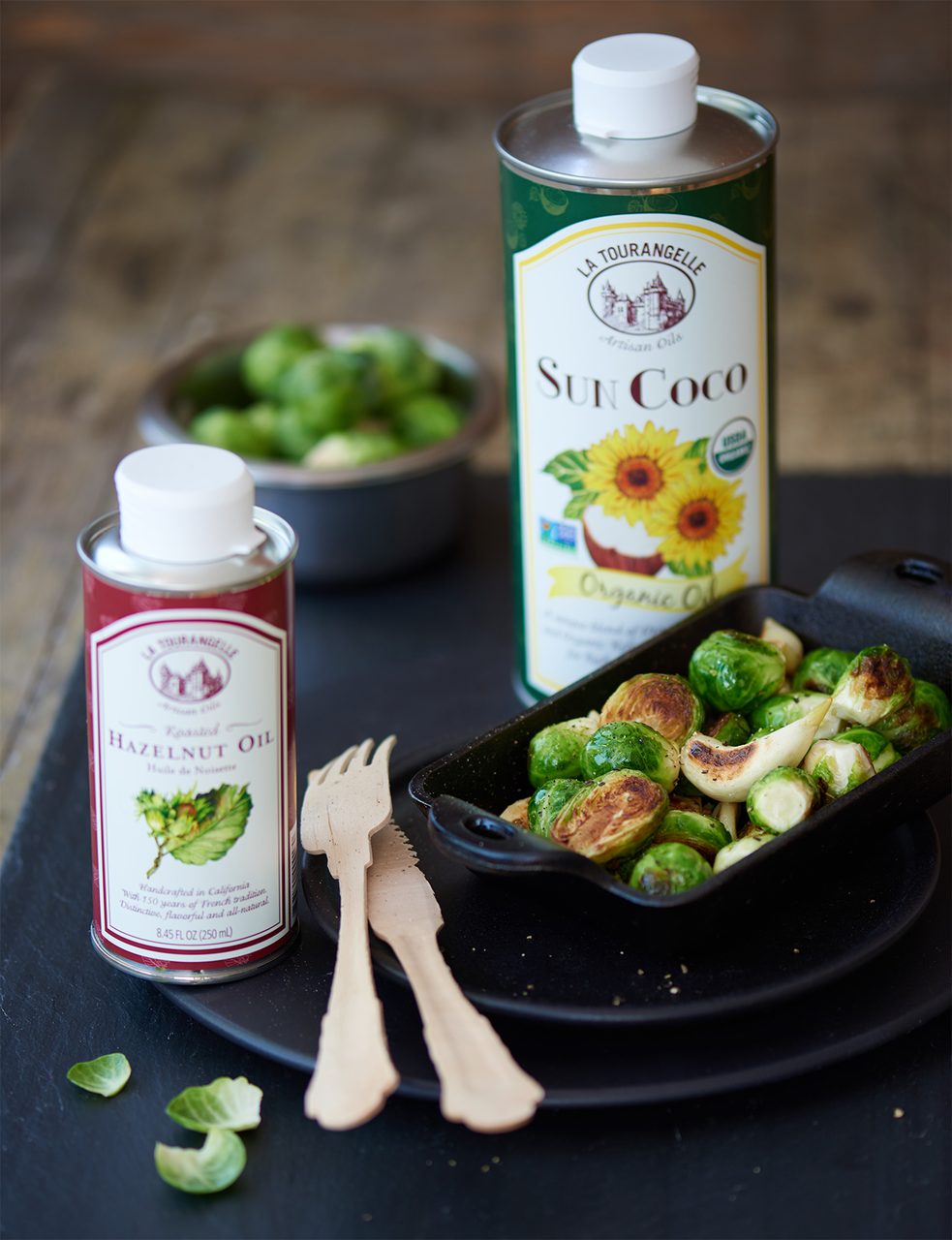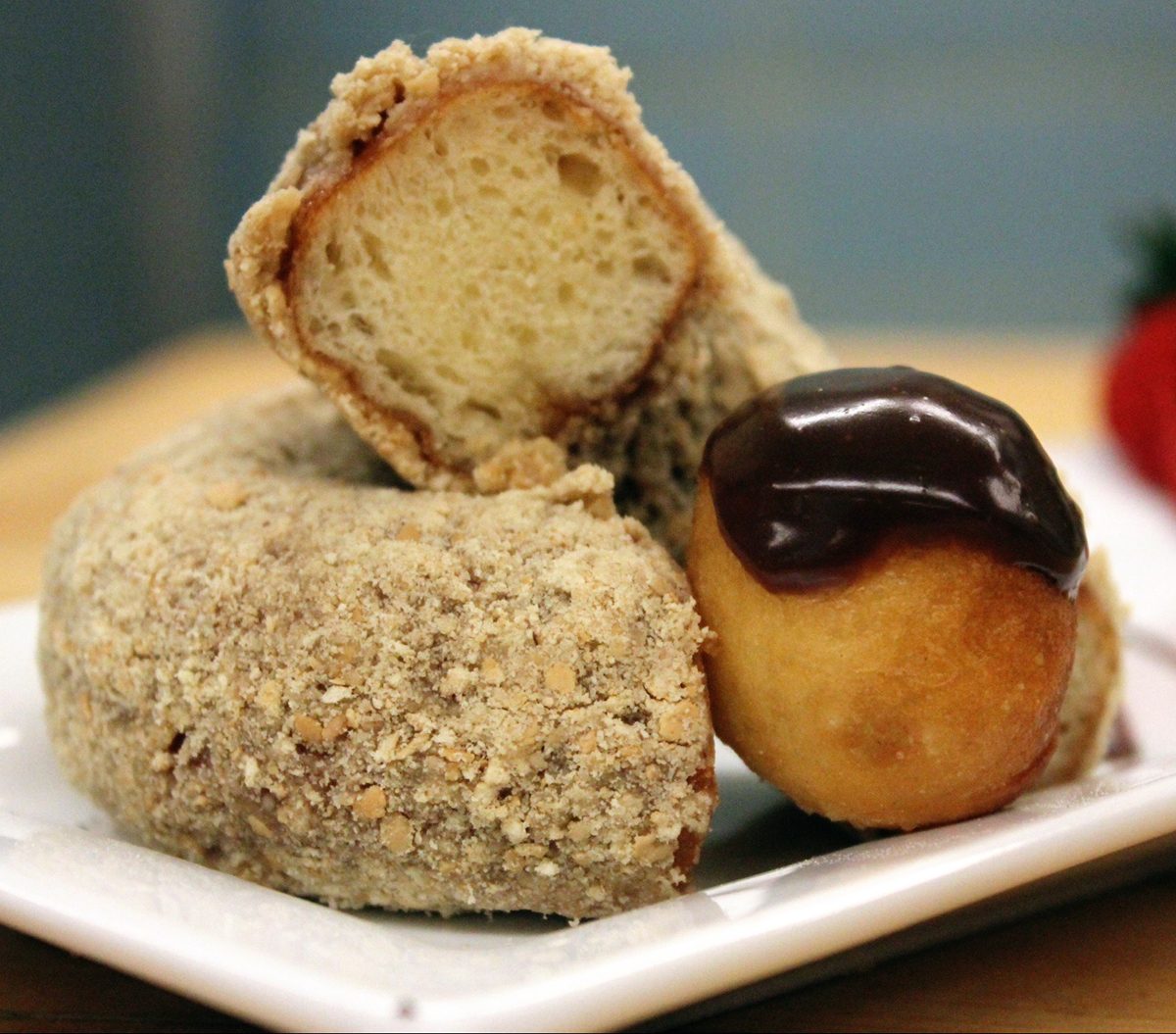INGREDIENT
challenges
New and traditional oils and fats are sizzling!
New Game
Oil’s
With such an acute focus on well-being in the wake of a year and a half of an ongoing global health crisis, consumers are paying closer attention than ever to the ingredients in the foods they eat. Moreover, with working from home shifting from a temporary to a permanent state for many workers, these same consumers have learned the hard way that calories count, so counting calories is back. At more than twice the calories of carbohydrates and protein, oils and fats in the diet are once again being scrutinized more closely.
Hopefully, this trend won’t see a return to the fat fear that demonized lipid ingredients for so long. Yet, it is a sure bet that the types of fats and oils consumers seek will have to show clear advantages when it comes to health and functionality. Luckily, ingredient makers and technologists are well aware of this and are already developing, refining, and promoting cooking and dressing oils that bring a lot more than calories to the table.
Leading the trend in healthier oils have been the high-monounsaturated fatty acid (MUFA) oils—predominantly soy and canola oils—that, unlike other MUFA oils, have top-end smoke points that allow them to perform well under frying and high-heat baking while retaining their health value as unsaturated fats.
Video courtesy of: Getty Images / DenisZbukarev
By DAVID FEDER, RDN, Executive Editor–Technical

Solid fat technology allows butter mimics from sources such as coconut oil to have the function and flavor of their dairy counterparts. Photo courtesy of: ButterBuds, Inc./Shutterstock
Added recently to the roster of high-performing, high-oleic oils are varieties from sunflower seeds and peanuts. The latter are positioned perfectly for the global flavors trend, as they figure prominently in Asian and African cuisines. Sesame oil is another trending favorite imported from Eastern culinary traditions, used frequently in Asia and the Middle East. Sesame oil boasts a good complement of oleic and linoleic acids, which together make up some 85% of the oil’s total fatty acid content. In a semi-refined format, sesame oil also has a high smoke point of 450°F, matching that of many fully refined oils.
New World Seeds
The Western Hemisphere certainly has made its contributions to seed oils, with South American chia oil making significant inroads into food products such as dressings and condiments. But this omega-3-rich oil, boasting among the highest concentration of alpha-linolenic acid in any plant oil, also has a surprisingly high smoke point of 400°F.

Soy oil is still the leader among plant-based oils, with high-oleic, non-GMO, and organic versions increasingly available. Photo courtesy of: United Soybean Board
Another benefit of chia oil is its high amounts of vitamin E, not only in the form of tocopherols but cancer-protective tocotrienols, too. These translate to an impressive oxidative stability and low rancidity. With a pleasant, faintly nutty taste that stays neutral in cooking and baking, chia is attracting attention from processors seeking an all-purpose oil with a healthy cachet and high performance.
Pumpkin seeds are also a native American source of healthful oil, although more typically it is used in dressings due to its low smoke point. However, the concentrated health benefits of pumpkin seed oil have led to its inclusion in a growing number of products, including spreads, condiments, and the aforementioned dressings.
Oil Futures
A new source of edible and nutritious food ingredients comes from the pongamia tree (Millettia pinnata), native to South and Southeast Asia. In India, it is known as the Indian beech tree, or karanja. A type of legume, pongamia fruit has high functionality as a provider of gluten-free, non-GMO healthful food oil, according to research. Its textural qualities seem especially well-suited for plant-based dairy and meat analogs.
In a study of plant-based burgers, when pongamia oil replaced other liquid oils, it helped deliver juicier mouthfeel. It also brings butter-like melt and taste characteristics to plant-based margarines and spreads, while contributing a warm, golden color with much greater appeal than the current status quo of gray- and white-colored alternatives.
Pongamia oil provides a richer and creamier mouthfeel than sunflower oil in vegan mayonnaise and salad dressings. The light refining process needed makes it possible to better customize its unique flavor notes to suit user preferences. The pongamia tree also is a sustainable crop, rehabilitating the soil it grows in.
Research has suggested that its unusually high amounts of zinc, selenium, tryptophan, vitamin E, zeaxanthin, beta-carotene, and omega-3 and -6 fatty acids make this rich golden oil especially helpful for health issues such as genitourinary dysfunction, joint pain, and even diabetes. It also could promote good hair, skin, and eye health.
As a byproduct of the booming hemp industry, Canadian hemp seed oil is making headway in food production. With its high omega concentration, it has the health halo consumers seek. However, as with pumpkin seed oil, it has a low smoke point, so uses in formulations are limited to cold and shelf-stable products.
Mediterranean Favorites
Considered by many health experts to be the healthiest of dietary fats, olive oil has enjoyed great popularity for years, due in great part to the Mediterranean Diet popularized by Oldways Preservation Trust. This passion for olive oil was gradually recognized by food product makers, at first in dressings and condiments, then in RTE meals, and finally proliferating into multiple snack and chip products. It helps that this queen of food oils has a high smoke point—above 400°F—even in its virgin (unrefined) state.

Modern fat technology brings processors value-adding specialty vegetable fats and oils perfect for creating today’s plant-based versions of favorite foods. Photo courtesy of: AAK, AB
While certainly the most perennially popular of the Mediterranean oils, olive oil also has its domestic side, with California-sourced olive oil attracting attention for its high purity and secure sourcing. The same holds true for grapeseed oil.
The health benefits, functionality, flavor, and composition of grapeseed oil is nearly identical to that of olive oil, but recently, product from overseas has been impacted by the same risks of fraud and doctoring that plague less-than-scrupulous sources of olive oil. However, unrefined, solvent-free, expeller-pressed grapeseed oil from New York state and California helps processors avoid those risks.

Recent trends in food oils and fats are emphasizing their healthful attributes. Photo courtesy of: TerViva Bioenergy, Inc.
Avocado oil continues to entice processors with its high marketability and outstanding nutrition profile, rich in beneficial omega fats. Like grapeseed oil, it is similar to olive oil in functionality. Pure, unrefined avocado oil has a rich flavor that is less spicy than olive oil, as well as an unusually high smoke point for an unrefined plant oil, above 475°F.
Nut of the Matter
Tree nut oils resonate well with consumers seeking healthier oil options. Among these, almond and walnut oil are the most common. Almond oil has enjoyed a surge of popularity as a light yet flavorful oil that has an excellent smoke point and great healthy attributes, such as high vitamin E and minerals, along with omega-3 fatty acids.
Walnut oil, too, is a nutritional dynamo, leading tree nuts in its content of ALA omega-3 as well as α-linolenic polyunsaturated fatty acids (PUFA). All are desirable for their heart-health benefits. However, walnut oil has a relatively low smoke point. While that preserves its health benefits and rich nutty flavor, it also relegates it to use in dressings and condiments in food products, as cooking with it is best limited to only light sautéing.

Richly flavored unrefined oils from tree nuts and sunflower seeds perform better in light sautées, as finishing oils, or in dressings, spreads, and condiments. Photo courtesy of: LaTourangelle, Inc.
While pecan oil has yet to make its mark beyond boutique retail outlets, its value as an oil with high oxidative stability and high polyunsaturated fat content—plus a 470°F smoke point—makes it an oil to watch. Other tree nut oils, such as those from macadamia, baru, pili, and Brazil nuts, are edging into the market and could be taken advantage of in product formulation for their novelty as well as their health and flavor attributes.
Coconut oil remains highly popular, especially as a source of medium-chain triglycerides (MCTs). MCTs have been studied for an impressive range of benefits, including weight loss, blood sugar management, heart health, digestive health, cognitive performance, inflammation mitigation, and even tempering some symptoms of autism.
Oil Power
Red palm oil, along with annatto and rice bran oils, is especially prized for having high amounts of the tocotrienol form of vitamin E. This form of E has some 200-400 times the antioxidant power of the tocopherol form and has been shown in dozens of studies to not only protect against cancer but actually induce self-destruction in some cancer cells.
For processors, coconut oil, as with palm oil, has the distinct advantage of being replete with healthier forms of saturated fats that give it superior shortening-like capacity that is excellent for baking. Unrefined coconut oil does retain a distinct coconut flavor, but this is an advantage in many baked goods, especially pastries and cookies.
Recently developed is a coconut oil-based solution that allows manufacturers to replace block butter in many formulations, such as bakery products. As a dairy-free alternative, it provides bakers the same performance, texture, and flavor as block butter. The new product also delivers ease of handling, pricing stability, and shelf-stable storage that confers a longer shelf life on the end products.

The latest revolution in fat technology is a GMO-free, modified plant-based oil that reduces more than 90% of fat calories without compromising taste, texture, or functionality. Photo courtesy of: Epogee, LLC
Liquid coconut oil that has had the saturated fats mechanically separated out has gained appeal as frying oil, as it has less of a coconut flavor. This adds to the versatility of the popular ingredient. However, formulators should bear in mind that it still does impart some hints of flavor that might make it less suitable for products such as savory baked or fried snacks.
While sustainability and ecological concerns have made a dent in the rapid rise of palm oil as one of the leading food oils, highly sustainable sources of palm oil have been developed to counter Indonesian and Malaysian palm oil. Under the watchful eye of the Palm Done Right collective, organic African and South American palm oil is cultivated, produced, and processed in a way that preserves the ecology as well as the farmers. Many processors are quick to market their products as using palm oil obtained from these sustainable sources.

High-oleic canola oil, developed by traditional breeding, combines high smoke point with high functionality in a more healthful fat. Photo courtesy of: Manitoba Canola Growers
Forward to Basics
Soy, corn, and canola oils remain the most popular oils in food processing. All three are available from North American sources, although US canola production, while rising, is insufficient to meet demand. Both soy and canola oils offer high-oleic versions, and in a 24-day functionality and sensory study, high-oleic soybean oil showed superior performance to other high-stability oils.
In a recent functional study, puff pastries—one of the more challenging baked items—showed the least amount of change in texture when compared to alternative when made with high-oleic soybean shortening. Also, a doughnut study (using both cake and yeast-raised versions) found that high-oleic soybean shortening produced products similar in texture, interior grain, spread, height and size when compared to doughnuts made with partially hydrogenated soybean oil.
Southern Charm
Oil from sorghum is not even in the commodity pipeline yet, but it is a food oil source that could hold a great deal of promise. As one of the top ten grain crops grown in North America, sorghum is high in protein, vitamins, and minerals—especially iron—and is highly resistant to drought and high temperatures.
Sorghum grown in North America is predominantly used for animal feed or exported to Asia. In the US, the small fraction that is not exported typically ends up in the human food chain as a sweetener, syrup, or an ingredient in brewing.
Only recently has sorghum begun to be promoted for expanded usage, specifically as a gluten-free flour. Yet sorghum is used regionally throughout Africa as a versatile grain for human consumption. This includes its oil, which is similar to corn oil in flavor and function.
One of the things holding back commercialization of sorghum as an oilseed crop is the high demand for it in the aforementioned other uses. Yet as American consumers continue to demand high-performance, healthier oils, sorghum oil could well be the next big oil in the pipeline.
Corn oil, once the primary food oil in the US, fell below soy oil and has remained in second or third place as an oil crop for years. However, it has been regaining lost ground as natural and organic crops are expanding to meet demands for GMO-free product.
Suppliers are now able to provide processors with non-GMO versions of classic food oils and fats. These often are organic and typically are expeller-pressed and solvent-free. They boast all the versatility and functionality of the old classic but also fold nicely into clean-label trends.
Corn oil is an excellent source of essential fatty acids (primarily in the form of linoleic acid), which make up more than 60% of its total composition. However, percentages of α-linolenic acid are lower than 1.5%, so corn oil is not a good source of omega-3s. The second major fatty acid is oleic, but high-oil corn strains that contain similar amounts of linoleic and oleic acids have recently been developed using traditional breeding methods. Sunflower oil offers processors another option for a full-tasting, non-GMO oil. Unrefined sunflower oil has a rich, toasted nut flavor that lends itself well to savory formulations, plus high-oleic sunflower oil, with a minimum 80% oleic acid, is now available as well. PF
September 2021
